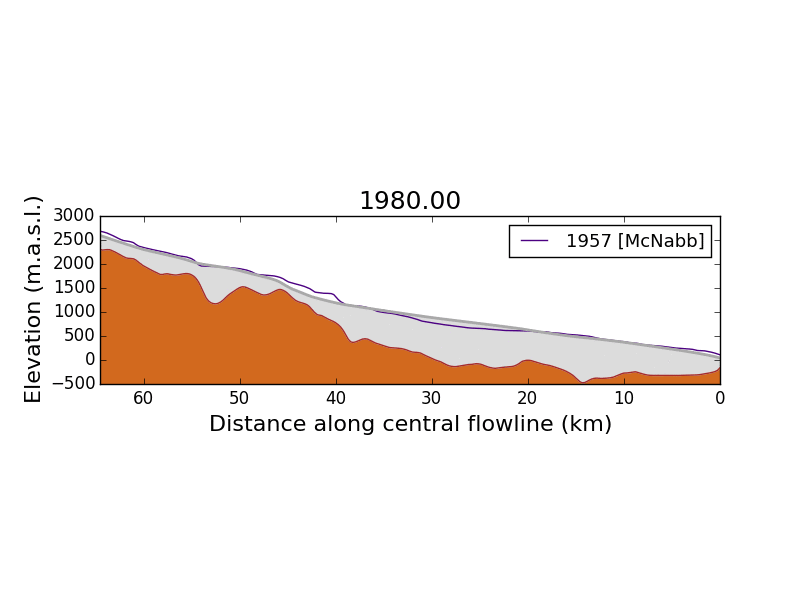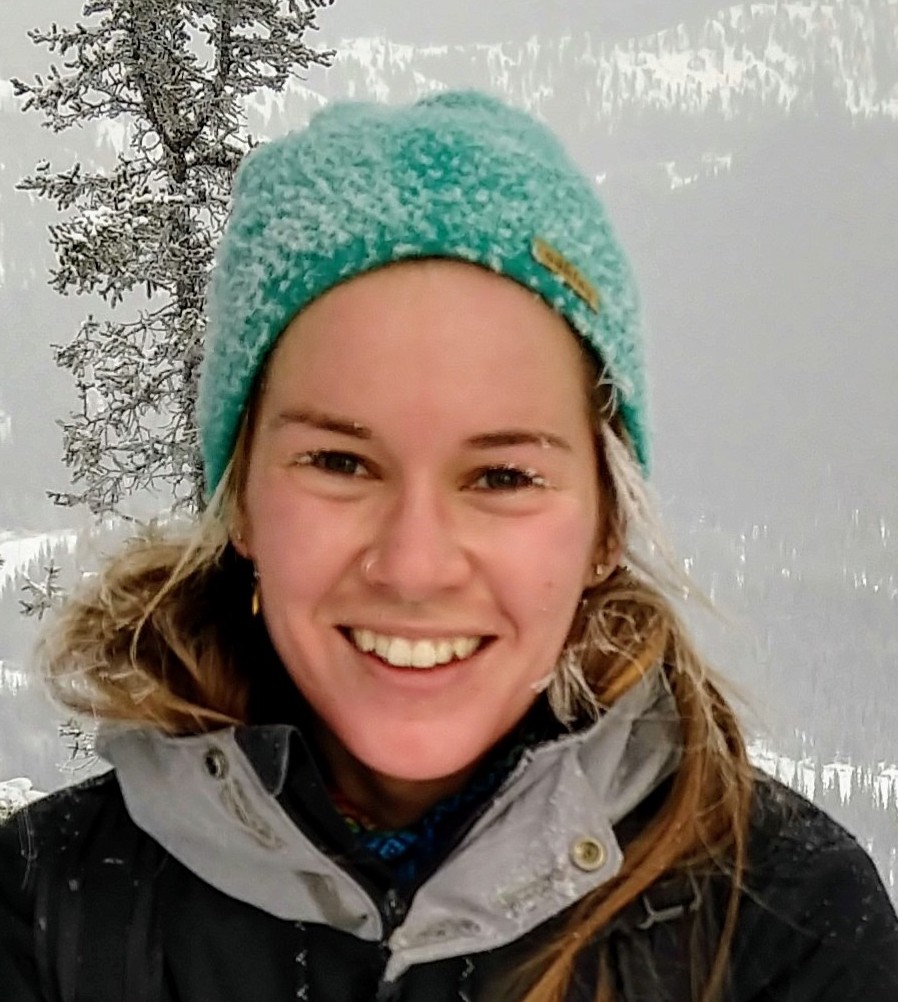Ice dynamic contribution to sea level
As the climate warms, glaciers and ice sheets shed mass to the ocean, and sea levels rise. That shedding of ice mass can happen through melting, breaking off of icebergs, or changes in glacier flow. The latter two comprise “dynamic mass loss” and have been a major source of uncertainty in projections of 21st-century sea level change.
I have written a model called SERMeQ - the Simple Estimator of Retreat Magnitude and ice flux (Q) - to produce an upper-bound estimate on calving glaciers’ contribution to 21st-century sea level rise. The model is applicable to any marine-terminating glacier whose front is not floating. One important application is to study changes on each of the 200 outlet glaciers draining the Greenland Ice Sheet.
Example
Below is an animation of a SERMeQ-simulated retreat on Columbia Glacier, Alaska. We see a profile of the glacier (grey) along a centerline. The grey glacier ice flows from figure left to right over bedrock (brown) down to the sea (blue). Observed glacier profiles appear in purple for comparison.

You can check out the core model code for SERMeQ in this GitHub repo. SERMeQ is under active (re)development; please do drop a line with any questions about your specific use case.
Collaborators
Jeremy Bassis (University of Michigan), Anna Chau (MIT undergraduate), Ruitang Yang (U. Oslo)
Publications
Ultee, L. and Bassis, J. N. (2020). "SERMeQ model produces a realistic upper bound on calving retreat for 155 Greenland outlet glaciers." Geophysical Research Letters doi:10.1029/2020GL090213
Bassis, J. N. and Ultee, L. (2019). "A thin film viscoplastic theory for calving glaciers:toward a bound on the calving rate of glaciers." Journal of Geophysical Research: Earth Surface 124. doi:10.1029/2019JF005160
Ultee, L., Arnott, J. C., Bassis, J. N., and Lemos, M. C. (2018). "From ice sheets to main streets: Intermediaries connect climate scientists to coastal adaptation." Earth's Future 6(3): 299-304. doi:10.1002/2018EF000827
Ultee, L. and Bassis, J.N. (2017). "A plastic network approach to model calving glacier advance and retreat." Frontiers in Earth Sciences. 5(24). doi:10.3389/feart.2017.00024
Ultee, L. and Bassis, J. N. (2016). "The future is Nye: an extension of the perfect plastic approximation to tidewater glaciers." Journal of Glaciology. 62(236): 1143-1152. doi: 10.1017/jog.2016.108
Extensions
Perhaps the most exciting use of SERMeQ is as a module within a more sophisticated global model. For example, SERMeQ could produce a calving criterion to describe a moving ice-ocean boundary in Earth system models. Please get in touch if you’re interested in exploring this idea.
Postdoc Ruitang Yang is working to integrate SERMeQ’s physics into a new frontal ablation parametrization for the global glacier models PyGEM and OGGM.
